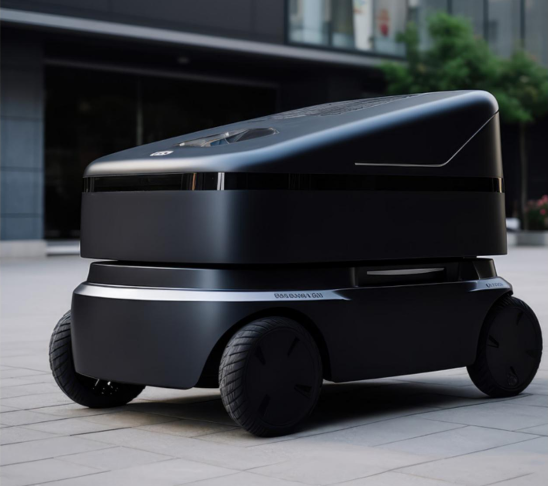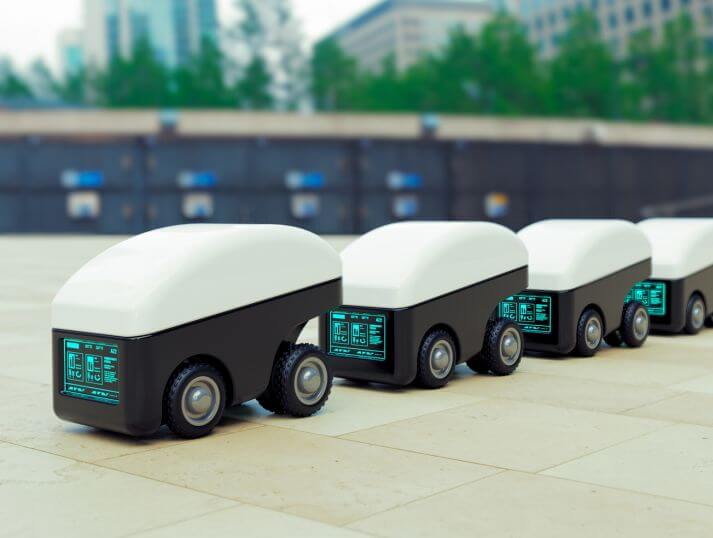The rapid growth of e-commerce has led consumers to have increasingly high expectations when it comes to the delivery of products purchased online. They demand their orders to be delivered as quickly as possible, which is often quite a challenge for retailers. However, automation is lending a helping hand to retailers. It offers solutions that are already being tested and could revolutionize the delivery market in the near future. They are described in the report “Robotics in Retail 2024.”
Modern supply chain solutions
The global transportation of goods in the retail industry is worth about $2 trillion annually. However, it poses ongoing challenges for retailers. In addition to those related to cost and timeliness, they have recently been joined by those related to sustainability, as well as the availability of skilled professionals, particularly truck drivers. Their shortage is expected to worsen over the next 10 years.
The remedy for this is automation, which has numerous benefits. Robotized solutions in the supply chain mean no limits on the driving time and range of human drivers. Replacing humans with robots will make it possible to transport goods 24 hours a day and cover long distances faster, which could prove to be a huge competitive advantage. It will also eliminate so-called human error. Reducing the number of specialized drivers and operators, or even abandoning their services altogether, will also provide considerable savings.
Tests of autonomous trucks are already taking place. For example, Ikea is partnering with Kodiak Robotics to test automated product deliveries from a Houston warehouse to a Dallas store. And Forward Air Corporation, a transportation provider, is testing a robotic transportation service that operates 24 hours a day, six days a week. Its route runs between Dallas and Atlanta, with autonomous trucks covering 1,600 miles (more than 2,500 kilometers) both ways.
However, these solutions are not yet ready for larger-scale deployment. For now, tests must be fully supervised by humans, who can quickly take control of the machine if something goes wrong. Autonomous trucks have problems with driving in city centers, among other things – due to heavy traffic and unexpected traffic incidents. In such cases, they hand over control to a human or deliver goods only to warehouses located in the suburbs. For now, at least, the adaptability and experience of human drivers surpasses those of robots today in complex situations.
Robotized solutions for middle-mile logistics are developing rapidly, but numerous technical challenges will have to be met before they become commonplace. And also legal ones, as trucks, for example, may move across multiple countries or areas with different regulations.
Faster shopping with delivery robots?
The speed of delivery of last-mile orders is extremely important these days. As the results of Gemius’ report, “E-commerce in Poland 2023,” show, for the vast majority of Polish consumers, delivery of purchased products should take up to 8 hours (94% of indications). In comparison, delivery time of up to 24 hours received 26% of indications.
Robotics can help direct deliveries to customers in several ways. The first is automated robotic pods (small robotic vehicles) that navigate sidewalks and pedestrian areas. These small delivery robots have been tested since 2016 and are beginning to gain popularity. They are already being used by several universities in the United States, including the University of California and Stanford University, and in the UK by the Co-op, which offers customers quick delivery of goods from local grocery stores.

These robots can move within a radius of about 2 miles (3.2 km) from the store or warehouse from which they retrieve goods. So for the use of such a solution to make sense, there must be sufficient customer density in the area, and of course demand. The locations where these vehicles would go must also have a good sidewalk network. Automated robotic pods are unlikely to be suitable for driving on roads and are also not off-road vehicles.
Crowded sidewalks and lots of road crossings with traffic lights can also be an obstacle to this type of delivery – the need to stop and slow down frequently can significantly affect order delivery times. The downside of this type of delivery is also the size of the robot – it can usually deliver one order at a time. However, tests are already being carried out with a vehicle carrying several such smaller robots – they are released at some location and return after delivery.
Will self-driving cars replace couriers?
Another solution that may be used in the near future to deliver orders directly to customers are self-driving cars. This technology is currently being developed rapidly, primarily for transporting people from point A to point B, but manufacturers of such cars are also thinking about self-driving vehicles for business use, which will certainly benefit the retail industry.
Autonomous cars for last-mile deliveries can range in size from full-size vans to golf cart-like vehicles. JD.com is testing smart autonomous delivery vehicles in China that look like small parcel trucks on wheels. They drive to locations where consumers can pick up their orders.
Also in China, WeRide is using a self-driving robotic van to deliver customer-ready orders to physical stores online. In the UK, Asda is testing the delivery of grocery orders by self-driving cars. Security of delivery is supervised by a human who also unloads the purchases.
Autonomous cars are potentially better than the aforementioned small robotic vehicles for large cities, where those there may not be able to cope with heavy foot traffic. Although, of course, traffic jams, parking restrictions and no-go zones can be a big problem for self-driving cars. Difficulties in their use may also arise from legal acts – specifying where they can and cannot be used.
Will drones change the e-commerce delivery?
Drone delivery, which Amazon founder Jeff Bezos announced in 2013, is also already happening. Many large companies, including Amazon, Walmart, Tesco, JD.com and Alibaba are experimenting with this form of delivery of ordered products. Walmart recently made 10,000 drone deliveries, and Wing has arranged more than 350,000 such deliveries worldwide, including nearly 1,000 in a single day in Australia. The global drone delivery market is projected to be worth $28.9 billion by 2027, at a CAGR of 52.4%.
Drones are best suited to low-density residential areas or hard-to-reach locations. Currently, drone order transportation is not profitable for high-frequency or mass-market deliveries, but this may change in the near future.
Like other forms of autonomous delivery, drone goods delivery has some limitations. Drones can travel limited distances, and they must also be provided with a safe place to land or drop their cargo. Their usefulness may be limited by atmospheric conditions, such as high winds, rain, or low temperatures. In addition, they can’t fly everywhere, and there is a risk that such zones will be expanded as drone flights become more common.
Obstacles to the broader use of drones could also be privacy restrictions, which could be exacerbated by regular deliveries in highly populated areas. And the noise they generate, although drone manufacturers are working to reduce the annoying noises they emit.
The full “Robotics in Retail 2024” report is available here.


